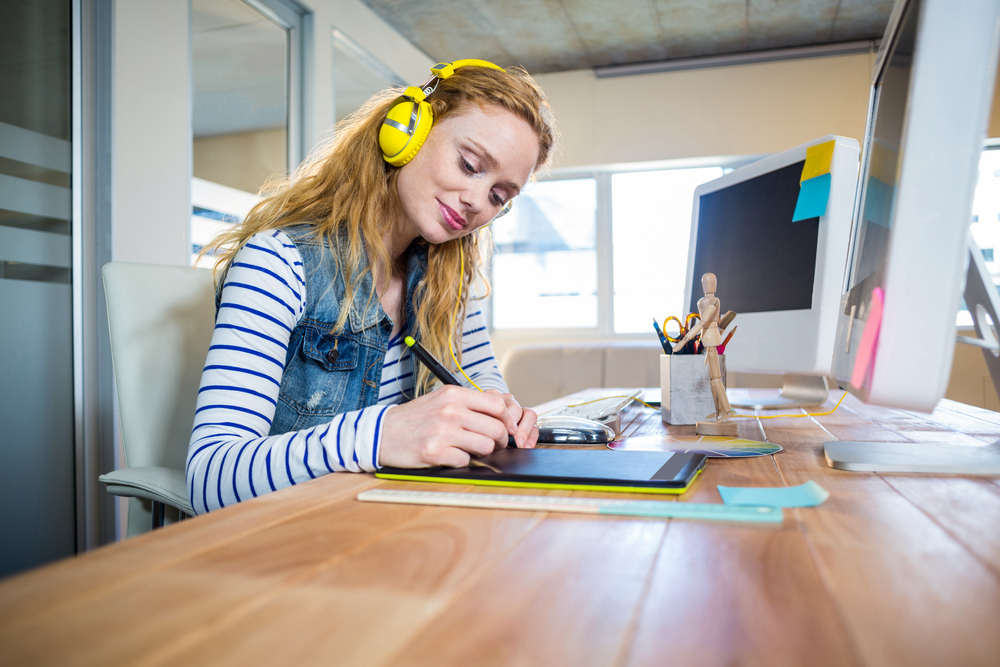Who hasn’t done it? Spent time deliberating over the exact music to inspire you while working on a design project and needing it to be right depending on the project you are working on and sounds you want to hear to get the right creative frame of mind.
The similarities between both arts are clear. Both music and design are intended to communicate or express something. Both are also subject to interpretation, focused on a specific market and, like all “art”, may not be appreciated by everyone. It all boils down to taste.
In addition, design shares some other characteristics of music that you may not realize:
- Rhythm: In design, the rhythm of a project needs to be consistent, following the same line so that it does not break or alter the continuity of the design.
- Harmony: This is the balance that is achieved with the understanding and use of fonts, colors and the type of images that illustrate our project.
- Composition: The result of assembling all the elements that help communicate the message of design.
But music shares some elements of design, as well. A good example of the importance of design in music is the visual identity of musicians. How many musicians or bands have had their rise to fame aided by iconic album cover? Also concert posters around the world tend to be loaded with an incredible design. They are often made by famous designers and have helped popularized big festivals like Lollapalooza, Coachella, Glastonbury and even the Montreux Jazz Festival. And all artists rely on different types of designers to create their visual identity, whether it’s a stage name, representative colors, logo design, album covers, etc.
In turn, museums, art galleries and design exhibitions are often accompanied by music and sensory support, and style varies to complement the exhibition. A good example is the playlist that the Palace Museum of Fine Arts created in collaboration with LifeBoxset and Spotify. The idea is to visit the museum while listening to the playlist created especially for each exhibit and thus enjoy a multisensory experience.
If we combine these two arts as a method of branding, we can get a user experience that is linked more strongly with a brand. Sensory branding can stimulate the senses and generate reactions in users to open a new channel of communication and encourage the use of our product or service. This method is widely used in clothing stores, cafes and even in movies.
This style of branding makes us perceive reality through our senses, interpreting information and emotions that affect our moods, actions, decisions and consumer habits. If you have a restaurant, hotel or store, be sure to combine these elements so that rhythm, harmony and composition combine positively for your brand.
Sandra Renteria is designer and Community Manager at Mijo! Brands, a leading digital agency with offices in CDMX and Puerto Vallarta.

